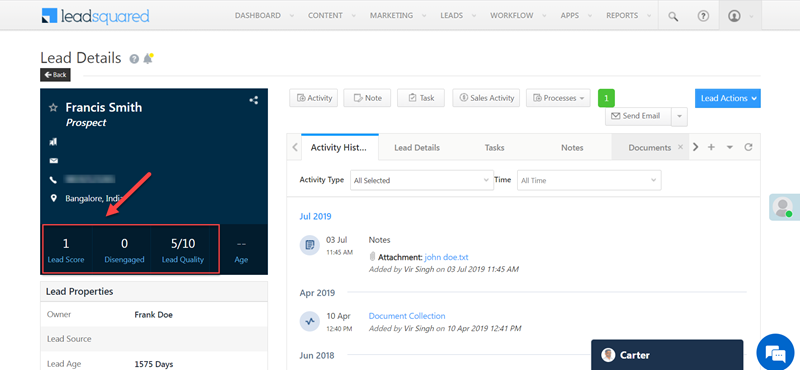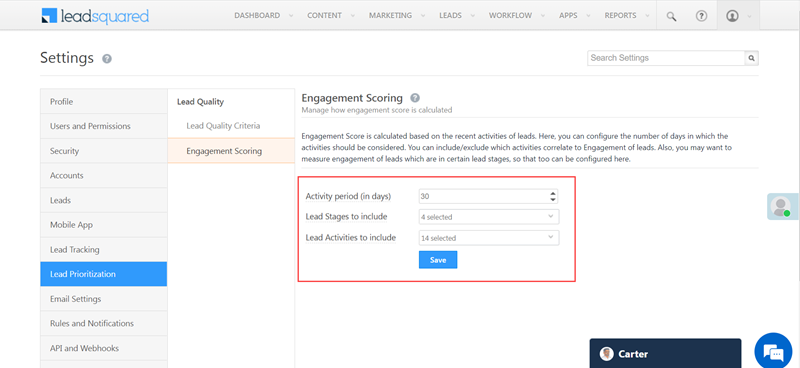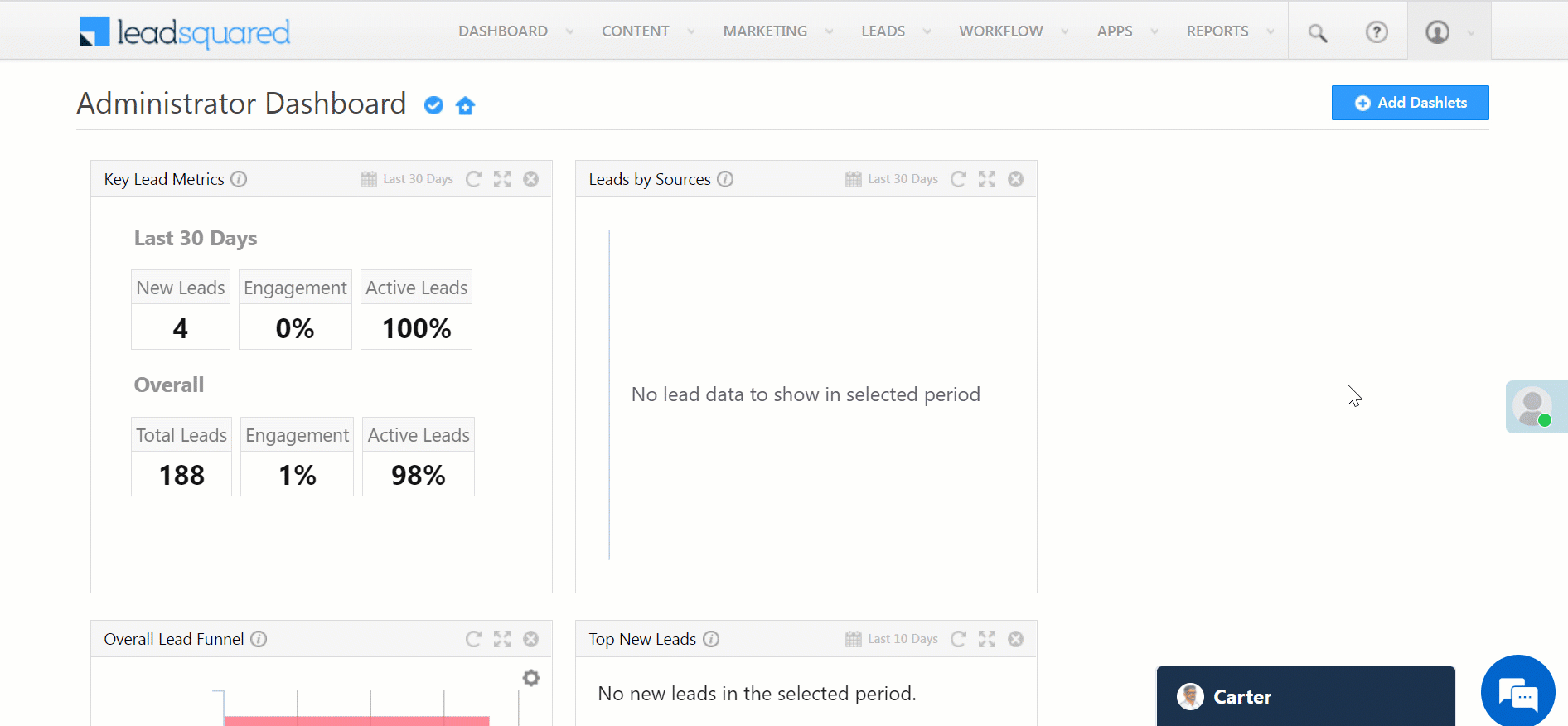1. Feature Overview
LeadSquared provides 3 core lead qualification metrics – the lead quality score, the lead score, and the engagement score.
While the quality score helps you identify your ideal customer persona, the lead score and engagement score indicate the level of interest your leads demonstrate in buying your product/service.
The lead score and engagement score are both calculated by assigning points to your lead’s actions/activities (e.g., responding to your email campaigns, visiting your website/landing pages, etc.). The lead score is the sum of all the activity points throughout the lead’s history, while the engagement score is the sum of a select few activities within a short period.
The engagement score tells your sales team which leads are the most likely to buy your product or service right now. You can customize the engagement score by defining the time period, the activities you declare most valuable, and the lead stages you want to include.

2. Criteria for Engagement Scoring
The engagement score is computed based on –
- Activity Period (in days): The number of days you want to include in the calculation of the engagement score. The default value is 30 days.
- Lead Stages to include: The lead stages to include in the calculation of the engagement score.
The default value is set as all the active lead stages in your account excluding the final stage (since the last active stage is usually a Customer/Client/Sign-up etc). - Lead Activities to include: The activities to include in the computation of the engagement score. For example, website visits, email opens, email link clicks, inbound phone calls, etc. To customize the score/points attributed to each activity, see How to Edit an Activity Score.

3. Set Up Engagement Scoring
- Navigate to My Profile>Settings>Lead Prioritization>Engagement Scoring.
- On the Engagement Scoring page –
- Enter the Activity period (number of days) for which you want to calculate the engagement score.
- The maximum limit is 366 days. Select the check box for Lead Stages to include in the calculation for engagement score.
- Now select the Lead Activities to include to calculate the engagement score.
- Click Save to save changes.

4. Next Steps
You can make use of Engagement Scoring in the following ways –
- Advanced Search to find the leads that are most/least engaged.
- Create lists of engaged/disengaged using Manage Lists. You can send out email campaigns, run automation, perform tasks based on these lists.
- Use Smart Views to target leads based on Engagement Scores.
Any Questions?
Do you have questions or issues with the content in this article? Let us know in the comments section.







Suppose, a lead activity posted today and later engages in 29 days from today and then later again engages after 25 days. Will the engagement score keep on increasing? OR it will count from lead creation date to 30 days?
Hi Amit,
The engagement score isn’t based on the lead creation date. It’s based on the activity period and list of activity types you define while configuring the engagement score. So if you set the period to 30 days, and if any activities you specified are posted within the 30 days, it will add to the engagement score, indicating that the lead is engaged. After 30 days, the cycle will reset and the engagement score will be calculated from scratch again.
Hope this clarified your doubt.